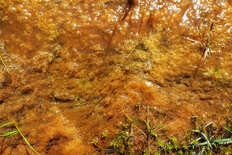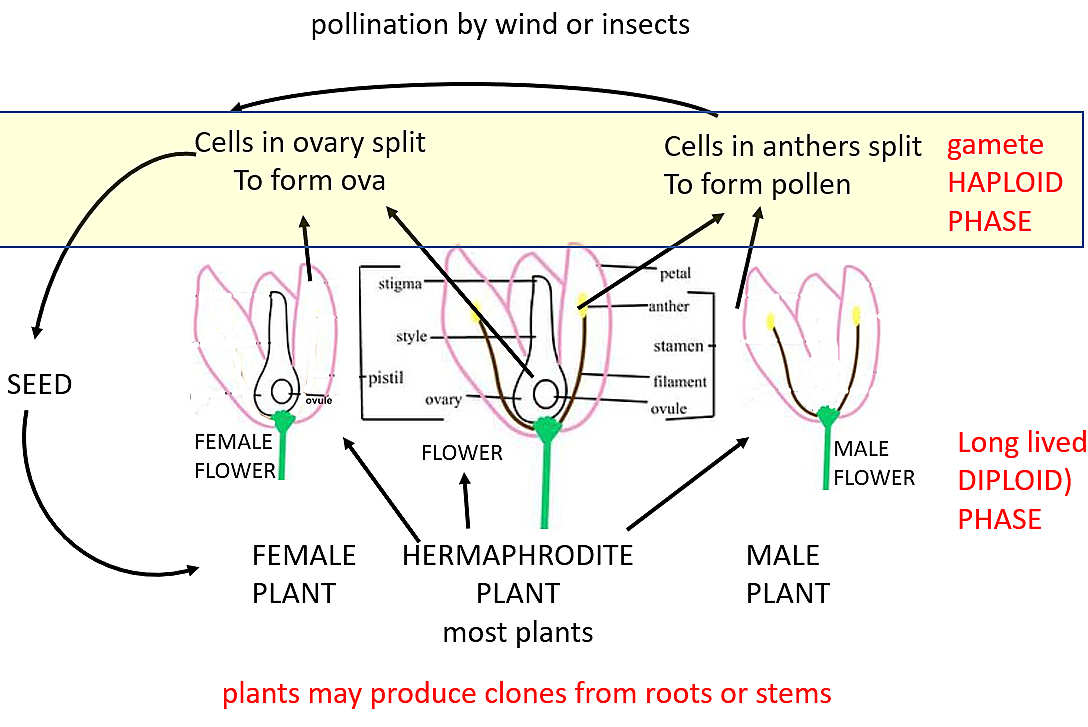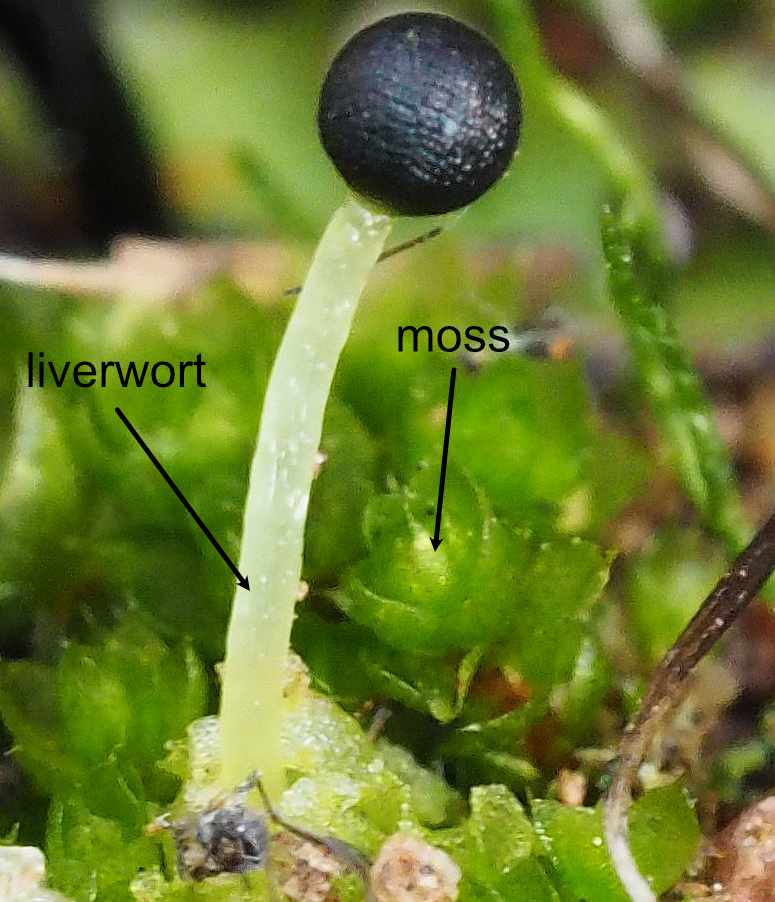It is thought that land plants and fungi spread to land via freshwater ponds. First were simple algae, which would have produced mats of dead material, which became food for the first fungi about 450 million years ago. About this time south-west Western Australia was a part of Gondwana, which was above sea level and close to the equator. I am tempted to think that these great events occurred near present-day Narrogin. Well, several kilometres above Narrogin, as the land surface has eroded down that much since then.
| Some fungi quickly absorbed single-celled algae to form lichens, which can directly access nutrients from rocks and soil. This was an exceptionally successful union, which persists today. There are several lichen species in the image on the left. |
Consider first the life cycle of a higher plant.
Adult plants have two sets of genes in each cell (diploid). Most plants have a male gene and a female gene (monoecious plants, hermaphrodites) with flowers that have male (anthers with pollen) and female (ovary with egg) parts. Gymnosperms have male and female flowers on a single plant. Dioecious plants have male and female plants, each with have two male or two female genes and develop male or female flowers. In the short-lived flower phase, cells in anthers and ovary split to form pollen and eggs that have only one set of chromosomes (haploid cells/gametes), which are brought together to fuse and develop into diploid seeds.
Unlike higher plants, the (double-gene) fertilised egg grows into a very short-lived 'plant' (a sporophyte) inside the egg receptacle of the parent gametophyte, which continues to nourish it. The sporophyte usually grows a narrow stem ending with a fruiting body called a sporophore. Inside the sporophore, double chromosome cells split into single chromosome gametes, which form wind-dispersed spores.
The spores can resist drying, which enables mosses and liverworts to colonise seasonally dry and freshly disturbed soil.
Some distinguishing features include
- They contain oil glands in their tissue.
- Gametophytes can be elongated or crinkled, but the sections have linear growth. Moss generally have spiral growing points.
- Liverwort sporophytes have shorter, clear to black stalks and glandular spore capsules. Moss have longer green stalks and container-like spore capsules, which often have a noticeable lid and/or spike.
- At Narrogin, liverworts tend to be in wetter spots, whereas moss is more generally common.

The bryophyte gamete phase is very hardy. I often see clumps of moss clones in the driest parts of the landscape such as gravelly rises and breakaways. Clumps completely dry out over summer. After rain they rapidly rehydrate and produce more clones within the clumps.
The image shows a gametophyte clump with spore-bearing sporophytes, and clone fragments that have broken away to be carried away by runoff to establish downslope. Most dry area clumps with sporophytes are hermaphrodites. These produce both spore and egg receptacles on the same plants, so less rain is needed to splash sperm on to the eggs, than in separate male and female gametophytes.
| Moss clumps store water, dead moss and other organic matter, which particularly attracts some small agaric decomposer fungi. Do not taste these. Galerina species are deadly. LIchenophalia chromaceae is often found with moss, but is called a lichenised fungus. Hyphae at the base of the mushroom forms a mat, which contains algae. The algae create sugars by photosynthesis for the fungus (as in lichens) |
I wish I could take a time machine back to see ancient forests.
Long before trees overtook the land, Earth was covered by giant mushrooms 8 meters tall and one meter wide, over a knee-high understorey of bryophytes, other fungi and lichens. These Prototaxites fossils have been dug up in Saudi Arabia.





















